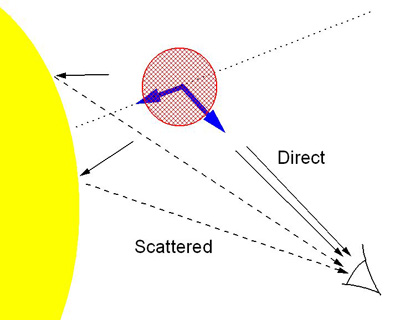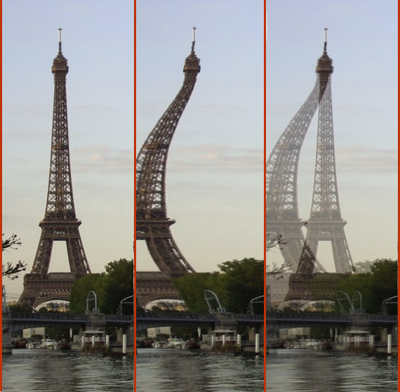A solar X-ray dentist mirror
| Nugget | |
|---|---|
| Number: | 42 |
| 1st Author: | Eduard Kontar |
| 2nd Author: | Hugh Hudson |
| Published: | 8 January 2007 |
| Next Nugget: | A last best active region |
| Previous Nugget: | Coronal gamma-ray sources in giant solar flares |
Introduction
RHESSI observes hard X-rays (and γ-rays) emitted from the solar corona by fast (even relativistic) electrons that produce bremsstrahlung. Many of our previous science nuggets have dealt with various aspects of this process. Here we introduce something new and fundamental about the physics itself: the modification of the observed spectrum by the Compton scattering of the X-rays in the solar atmosphere itself. The key element of the physics is that the stopping path length (the "range") of the electrons at our energies (> 10 keV) is shorter than that needed for photon scattering, due to other effects. Thus we can think of X-ray source geometrically as a cloud floating in the solar atmosphere above a "reflective" surface. What are the physical properties of this reflection?
We can put this in scale by comparing the electron range and the scattering length. The range roughly obeys R = 10-4(E/20)2gm cm-2as a function of electron energy E in keV. A 20 keV electron thus will stop in material of thickness no greater than 0.1 mg cm-2, less than the thickness of a sheet of paper. In contrast a non-relativistic photon will scatter, on average, upon traversing a thickness of ξ = 2.5 gm cm-2- an inch of water. This coincidentally is approximately the thickness of the entire solar atmosphere, ie everything above the photosphere. Note that it is much smaller than the thickness of the Earth's atmosphere.
At low energies (below about 12 keV) the cross-section for photoelectric interaction is larger than the scattering cross-section. This means that photons below this energy will preferentially be absorbed, and not reflected. At higher energies (tens of keV) relativistic effects in the scattering cross-section become important, but the basic point is that the spectrum of the scattered component is characteristically different from that of the primary component. We know exactly how the spectrum is changed due to this reflection. Our "Dentist's Mirror" results from the difference between the primary and reflected components and the fact that R << ξ; Figure 1 below illustrates the geometry.
The Dentist's Mirror and Green's functions
The direct emission from the solar X-ray source and the component backscattered from deeper layers simply add to each other. They add across an entire image, as illustrated in Figure 2 below.
One way to disentangle the two images is to use a Green's function; this allows one to use the known physics (the scattering process) even in the presence of unknown spectral distributions (we have a shocking lack of understanding of how these bremsstrahlung-emitting electrons actually get accelerated). The equation below shows the relationship between the primary spectrum IP and the scattered spectrum IS; the Green's function is G, and the figure on the right below shows how this function looks for specific primary photon energies. The observed spectrum is just the sum of IP and IS.
The parameter μ here is the cosine of the heliocentric angle of the X-ray source, for example a solar flare.
Conclusions
The analysis above is quite sketchy, but the theory has been worked out in full detail. We will just note that the solar X-ray dentist's mirror gives us a powerful analytical tool for analyzing energetic particles in solar flares. The solar X-ray "albedo" can be used as a dentist's mirror to look at the source from behind. The method allows one to achieve effectively stereoscopic views of a solar flare using a single telescope. The results are already leading to fascinating conclusions: our model concepts need strong revision - it is unlikely that the thick target model, with its powerful electron beam, will survive.
Biographical note
Eduard Kontar is a RHESSI team member at the University of Glasgow.


